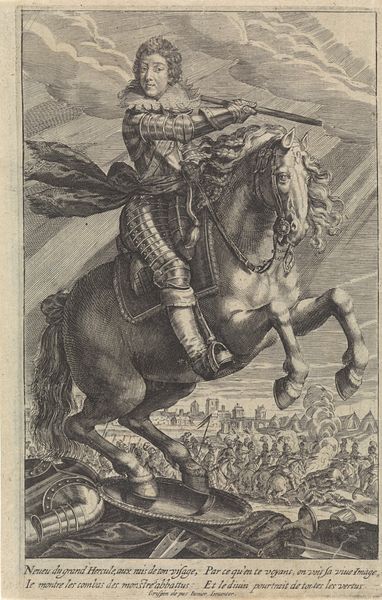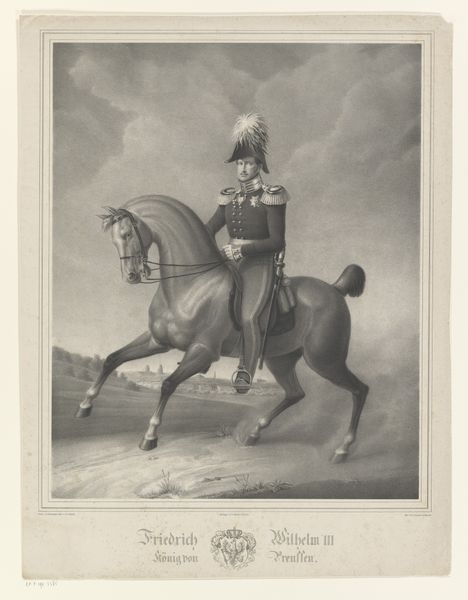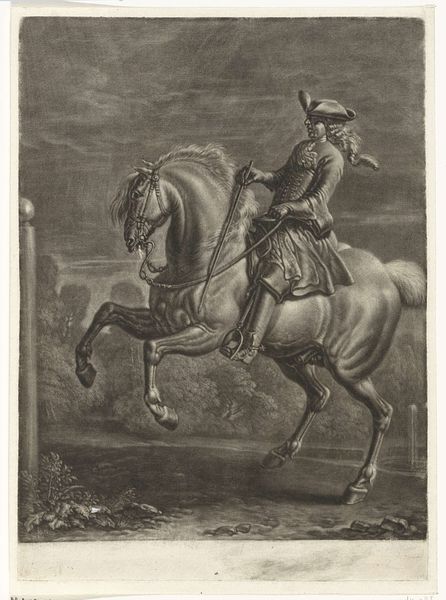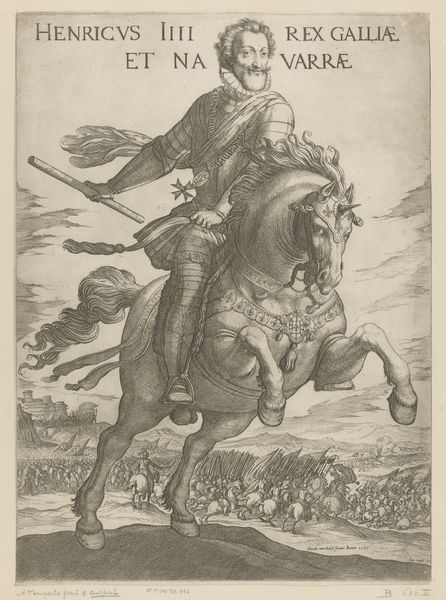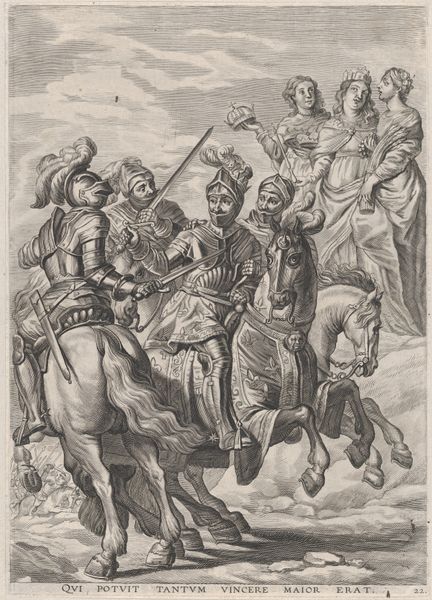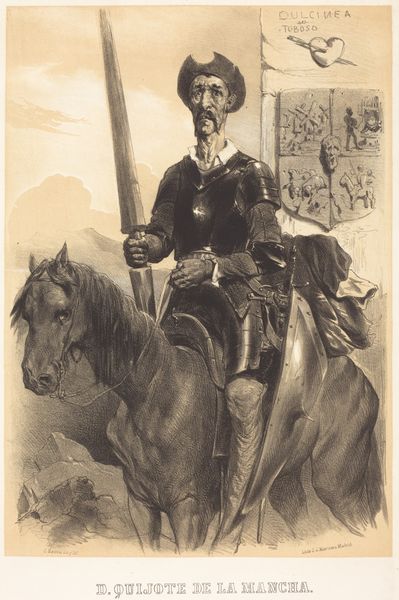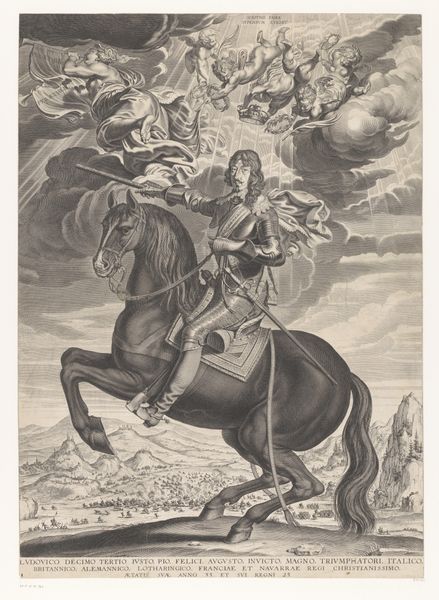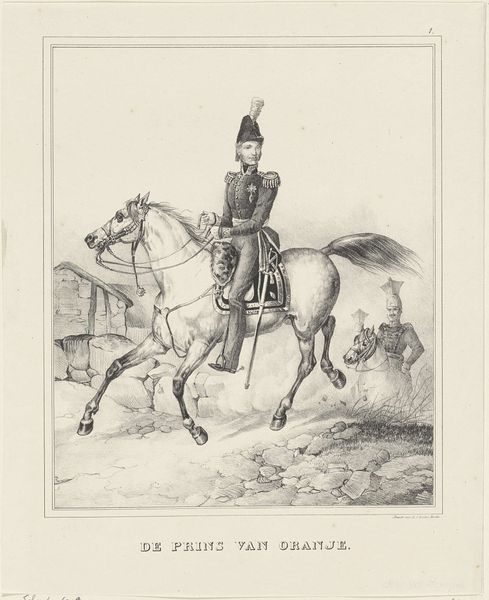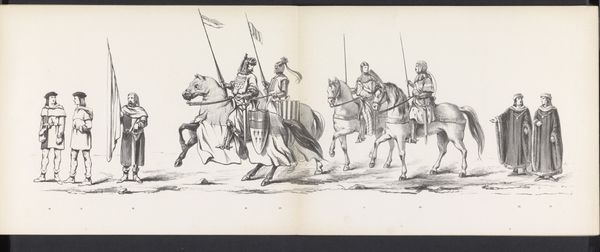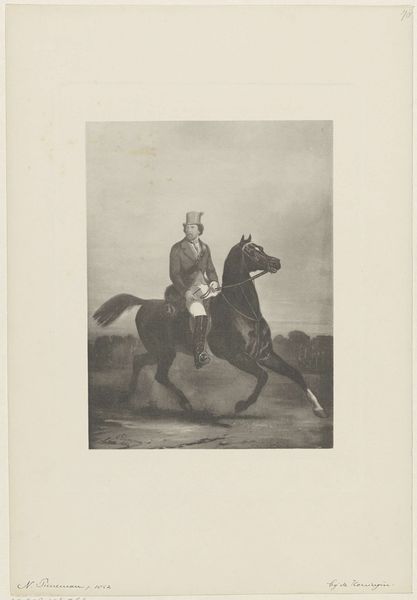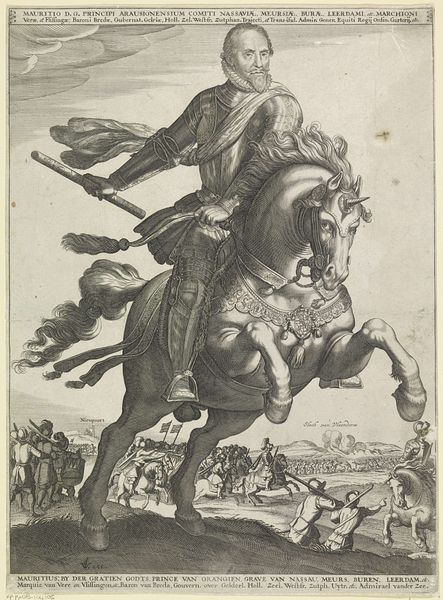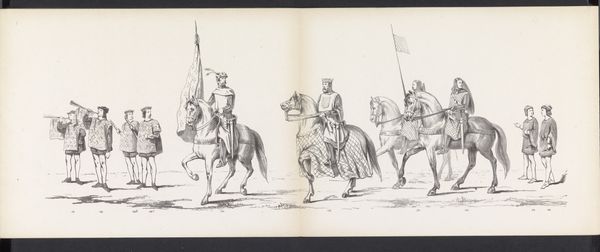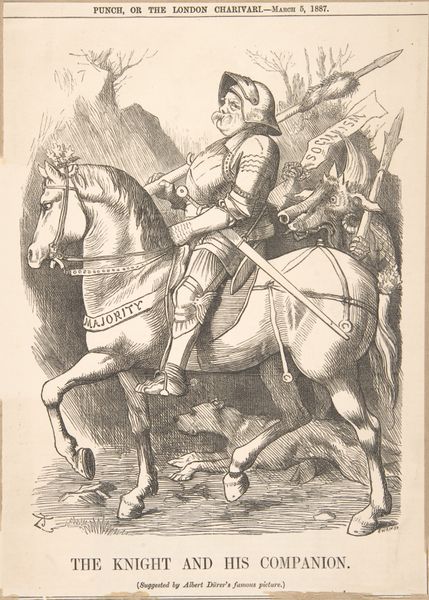
print, engraving
#
portrait
# print
#
old engraving style
#
group-portraits
#
romanticism
#
history-painting
#
academic-art
#
engraving
Dimensions: height 537 mm, width 411 mm
Copyright: Rijks Museum: Open Domain
Curator: I find this image, "Friedrich Wilhelm III van Pruisen met zijn zoons te paard," from 1833, rather commanding. I mean, there's something quite austere and powerful about the depiction of the King with his sons on horseback. Don’t you think? Editor: My initial feeling? Somber, almost…stiff. The figures are very upright, a sense of controlled movement in a limited palette of grays. Tell me more about the making of this, the process… it’s a print, yes? Curator: Indeed! This piece is an engraving by S. Rosenthal. The figures, while perhaps appearing stern, radiate a kind of noble serenity, and it's very romanticized in its feel. Think of the power that those clean, precise lines held at that time. Editor: Right, Romanticism. An era of intense nationalism. Consider the labor—the focused effort required to create this. An engraving isn't paint flung on a canvas. It's a deliberate act of replication meant for mass distribution, thus for a wider reach! What does that say about Prussian power then? Curator: Well, think about that meticulousness as artistry! Each etched line contributed to the larger-than-life depiction. The precision allows for those minute details in the uniform and tack – all underscoring their regal status. It is academic art at its most meticulously produced, in some ways. It becomes this monument to fatherhood and leadership… literally engraved in history, as it were. Editor: And meant to be consumed as such, reproduced to project an image of steadfast Prussian strength across a burgeoning nation-state, wouldn't you say? An image commodified and traded for political and perhaps also monetary capital. Curator: Maybe. But consider too the hand involved, Rosenthal’s unique artistry imbuing the reproduction with something singular, and not just the monarchical narrative. The light on the horses’ flanks, that feather detail! It’s…poetic. Editor: Yes, of course. Rosenthal would have been making choices based on social pressures as well, catering his work to ensure sales in an art market very conscious of royal imagery and status. Let us remember all art and especially popular prints serve someone’s interests, materially. Curator: It makes you contemplate legacy, really—how these images cement power in a historical consciousness. To be remembered thus is quite…stirring. Editor: True enough. Still, viewing the finished product here prompts thinking not only about political images, but also about what the printing process does and what making multiples means, materially and conceptually. A potent thing.
Comments
No comments
Be the first to comment and join the conversation on the ultimate creative platform.
